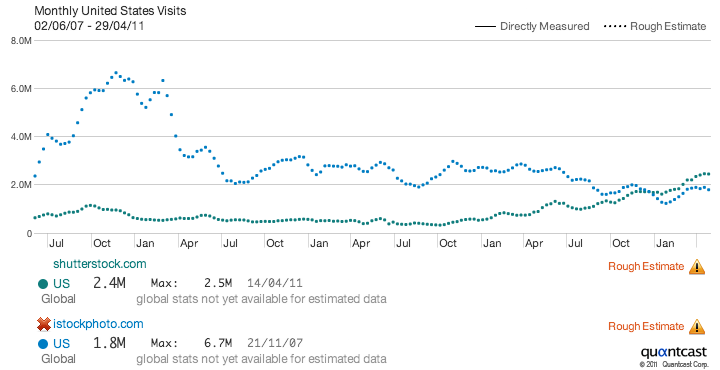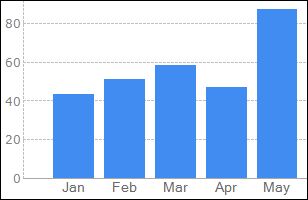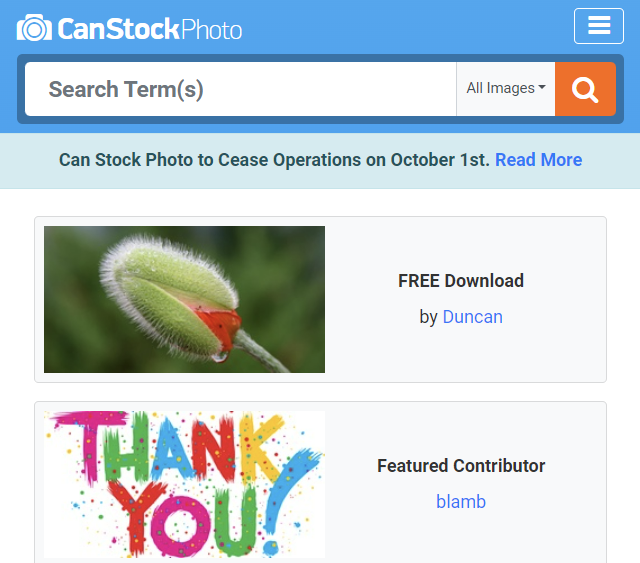Istockphoto, the first and for years the leading microstock site seems to be losing traffic and I think they could well be losing a lot of it to their nearest competitor, Shutterstock, although other sites seem to be getting an increase too. Below are comparisons of traffic between istock and Shuttertock. Remember that buyers account for most of the traffic to microstock sites. Stats shown are the latest available on ‘Compete’ and ‘Quantacast’.


The graph below compares US visits stats between the two sites, from June 2007 to the end of April 2011. The green line is Shutterstock. In this graph Shutterstock overtakes istock for the first time in December 2010.

Why is Istockphoto losing traffic and Shuttertock gaining?
Here are a few probable reasons.
1. Istock’s prices have been increasing. Microstock appeals to the masses, quite simply because it’s cheap, much cheaper than macrostock and much cheaper than hiring photographers. Yes, the images and footage can be bought multiple times, which hardly make them unique, but that doesn’t seem to bother most people. Out of all the media out there, just how much do we end up seeing? A small fraction probably and how often do we see an image twice and if we do, would we remember? Maybe those who work as artists, photographers or in the media industry are more likely to notice the same images being used by different publishers, but I would guess that most people don’t notice. So although many buyers don’t worry too much about the uniqueness of images, they do worry about price, especially if they are buying large quantities. You can see examples of the same photos being sold on different sites on spiderpic (update: website no longer exists), the difference in price between the sites is now becoming substantial.
2. Shutterstock’s prices remain stable and for buyers who need large quantities, this subscription site is by far the most cost effective. Shutterstock know they have a winning formula and there is no need to change it.
3. It is widely reported that istock’s site is bug ridden and has been for a while. It’s a grievance I see in forums all the time. Shutterstock and indeed all sites have a few bugs too, but the bugs on istock are said to be excessive, which doesn’t make for a pleasant online experience.
4. In September last year istock announced that they will be dropping commission rates, which were already very low, the drop in commissions became effective in January of this year. The internet is awash with blog posts and forum comments from contributors expressing their feelings about this move. See this post for examples. Has this gone completely unnoticed by buyers? I’m sure most buyers wouldn’t care what percentage is offered to those who make the images they download, but there will definitely be a proportion that do. I even read one forum thread of a contributor calling some of istock’s customers (i.e. various companies), informing them of what is happening and asking them to consider buying from other agencies, which is extreme to say the least, but sometimes people take extreme actions if they feel impassioned enough. Just a note, if you are thinking that if the contributors don’t like their commissions being cut, why don’t they just leave istock? Well when most of them started submitting, they were content with the conditions at the time. They then built up large portfolios and to build up a large portfolio on istock or any of the major agencies takes a lot of time. Make no mistake, it is work, it may be work that they enjoy but it is still work nonetheless and for many it’s work carried out after coming home from their day jobs. So to just get up and leave after spending so much time on the whole process isn’t the easiest of decisions, especially for those who are working exclusively with istock. Contributors never change the rules, they are subject to them and they hope that the agencies they work with will act honourably. But with regulation seemingly non-existent in this industry, the worst in human nature all too easily comes to the forefront, which is ‘lets take what we can get’. And with contributors being such an expendable asset, agencies seem to be able to get away with a lot.
I personally have seen significant increases in downloads on both Shutterstock as well as 123rf in recent months. I have small ports and I don’t upload much, but my downloads and revenue on these 2 sites have increased dramatically. On 123rf, my growth in sales started back in October 2010 and it doesn’t seem to be petering out. Whilst downloads on other sites remain steady. Below are my own download stats for Shutterstock so far this year, considering at the time of publishing this I only have 156 files online with them, the amount of downloads is impressive. May was the best month for me in terms of downloads by a long way and the way things are going so far this month, I may well end up getting as much by the end of June. Lots of new buyers maybe? I think so.

If istock is losing traffic are they losing revenue?
 Well, they are giving less to their suppliers and charging their buyers more. It seems that istock at some point made a business decision to get rid of the ‘little people’, in regards to buyers and I’m sure they don’t mind shedding a few non-exclusive contributors too. In contrast, Bigstock, which is part of Shutterstock is embracing the occasional buyers market, having recently introduced pay as you go purchasing. Istockphoto however, now seems to want to become the Porsche of the microstock industry. Porsche don’t make cheap city-runners as they don’t want to deal with all the ‘little people’, they would rather deal with the serious customers willing (and able) to spend $200,000 on a car. So buyers who could once afford istock’s prices have probably been seeking alternatives.
Well, they are giving less to their suppliers and charging their buyers more. It seems that istock at some point made a business decision to get rid of the ‘little people’, in regards to buyers and I’m sure they don’t mind shedding a few non-exclusive contributors too. In contrast, Bigstock, which is part of Shutterstock is embracing the occasional buyers market, having recently introduced pay as you go purchasing. Istockphoto however, now seems to want to become the Porsche of the microstock industry. Porsche don’t make cheap city-runners as they don’t want to deal with all the ‘little people’, they would rather deal with the serious customers willing (and able) to spend $200,000 on a car. So buyers who could once afford istock’s prices have probably been seeking alternatives.
Istock may well not be missing them.


Komar,
Very informative and well presented. I was already addicted to your blog for the humor, but this adds even more addictiveness. Wait, is that a word?
haha, there’s Microstock Posts anonymous meetings on Wednesdays and Fridays. So far I’m the only one who attends and it’s never been that much fun talking to myself, so I welcome new members. 🙂
HAHA! Stop enabling my addiction.
OOps! Very bad for me, i´m Istocker 🙁
\\ istockphoto and shutterstock.com (which i use both for buying and selling) are like comparing apples to bananas. shutterstock.com has some of the WORST quality files along with search functionality. We get way more downloads on shutterstock BUT way more income from less downloads/files on iStock. Shutterstock accepts all our files (bar a few) and iStock only accepts a small selection. Quality vs quantity are the obvious synergies between these 2 companies(shutterstock the later). I really don’t see any value in comparing them, other than they are selling a product in a similar category. In the same way Audi and Lada sell cars ( i’d drive an Audi if i could afford it – customers will do the same). If you are a quality / pro producer of content and want a good volume of sales – iStock is your market place. If you are an amateur producer of content chances are you will get most of your files accepted to shutterstock. Hope this helps – JasV . Last point, we friken hate searching through 10’s of thousands of images VS. 100’s of top quality results. we are busy – don’t have time for these stock companies that have a zillion of the same image – HELLO !!!! not a selling point!!!
If istock still portrays itself as an apple, then it will be compared to other apples. istock is a microstock agency and so is Shutterstock. On the front page of istock they use the words “istock offers top-rate imagery at low prices because exquisite shouldn’t be expensive”, sounds like a microstock site to me, but so many of these same “exquisite” images are on other sites too, including Shutterstock, at far lower prices.
Although anyone can apply to become a contributor on Shutterstock, it is not so easy to get accepted. All the top sites have focused on quality in recent years. I have had 7 contributor referrals on shutterstock and none of them were accepted, the same as most of those who I have refferred to other sites don’t make it too. If istock want to justify the prices they offer they should say they are now midstock, get rid of all the stuff they have which they share with other sites and change their advertising jargon to ‘istock offers only top-rate imagery at prices which are appropriate, because exquisite is worth it’. Then comparisons between istock, shutterstock and other microstock sites would cease.
The main point of this blog though is, I was comparing traffic, istock is losing it and it’s not going in to thin air, it’s being transferred to the other apples. Maybe those buyers don’t share your opinion that they are buying lesser quality or are using sites with bad search functionality. Shutterstock’s traffic is increasing fast, at a similar rate to istock losing it. But as I said, it probably won’t affect istock’s revenue. It’s a strategy that istock is using, there is much less work for them with fewer buyers (which means less overheads), they are just concerned with keeping the big spending buyers and probably aren’t concerned with the loss of traffic. At the moment though istock’s competitors are reaping the benefits of their strategy and if the strategy doesn’t work for istock, they may not be able to win those buyers back.
I personally don’t agree about quality of files on Shutterstock. Sometimes they’re more picky then IStock. The biggest difference is absence of upload limits. And I think this is good a thing. It gives buyer more options. I was buying files for some projects. And often IStock returned just one page of results. Good quality, but not quite what I needed. Whilst Shutterstock returned many pages. And I must say quality was not worse, but better then IStock.
Flattered Sir 🙂
Thanks for the flattery, I’ll look forward to the 25 Euros 😉
Jason, agree that having skillions of images isn’t a selling point, and as a contributor I hate it. But I’ve heard that the rejection rates at SS have gone way up lately, and I find Komar’s response to be well put. Istock does present itself as another apple.
It’s much harder to get images accepted with shutterstock than it is with istock now. And I think lots of great microstock contributors have better content with shutterstock. The reasons are because istock has restricted uploads for years, they have a really tedious time consuming upload procedure, they pay the lowest commission in the industry and they have mass rejected top quality images in some categories, like non-vector illustrations.
And istock have a lot of junk on their site too. Every time I look at the latest accepted images, there’s ones that look like they would now be rejected by shutterstock.
In theory, the search should send the low selling unpopular images to the end, so I really don’t see how having more images is a negative for shutterstock.
If the image quality and choice are equal between Shutterstock and iStock then having been spending £300 every other month for my magazine with iStock I’ve just realised I can get far more downloads from Shutterstock for less than half the price! I’ll be switching to Shutterstock next month that’s for sure + iStock have slow customer service whilst Shutterstock have very efficient live chat option. Now I just feel like I’ve been paying double for the past 2 years. Time to switch.